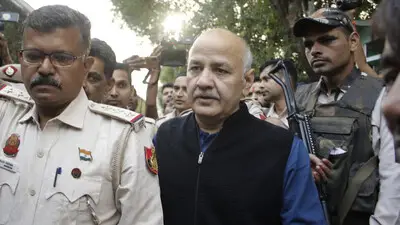Recommended Stories
Bhubaneswar: In a queer twist, the game-plan of CM Naveen Patnaik and BJD strategists to pit a record number of Rajya Sabha (RS) members in the 2019 polls seems proving counterproductive for the party.
What bothers the party strategists is the united opposition now has the numbers to wrest a RS seat from BJD, courtesy the party's game-plan of deploying as many as six RS members into the battle of 2019. As four of them have emerged winners in the poll, the party strategists seem to be in a huddle now over this new equation.
During the 2019 polls, anticipating an intense contest in Odisha, the strategists in the party decided to deploy Rajya Sabha members in the battlefield. The party had pitted as many as six RS members this election - a record in State's poll history. Though two RS MPs - Prasanna Acharya and Sarojini Hembram - had lost the 2019 polls, Odisha will see vacancy of four RS seats at one go in 2019. As per the constitutional norms, elections to fill the vacant RS seats will be held within six months from the date of vacancy, which means Odisha could witness a RS poll at most before the end of December this year.
What is nagging the BJD strategists is as four RS seats are to be filled up, the party with 112 members could easily ensure win for 3 candidates only, and if united opposition fields a consensus candidate then they could ensure a win for their candidate. The side-effect here is BJD could lose a RS seat to the opposition.
As per constitutional norms, RS members are chosen by MLAs. The elected MLAs vote in the RS polls and the process is termed as proportional representation with the single transferable vote (STV) system, means a MLA’s vote is counted only once.
As per the system, MLAs don’t vote for each seat. Instead, they are given a paper listing the name of contestants and are asked to give their order of preference for each candidate, like 1,2,3 etc against their names. There is a norm that guides the RS poll in a State, which is: [(Number of MLAs X 100) / (Vacancies + 1)] + 1.
Consider the Odisha case. Odisha has 147 MLAs. And the vacancies are four now. In order to get elected, each contestant had to secure 147X 100 divided by 4 vacancies plus 1. The calculations show a candidate needs at least 29 votes to get elected to RS from Odisha.
As per the requirement, BJD needs 116 MLAS to see its four candidates winning all the vacant seats. But the party has now only 112 seats, as one seat is vacant there seems no chance for BJD to touch the figure of 116 at any point of time. In contrast, the total strength of opposition in Odisha in 2019 is 34 (BJP - 23, Congress-9, CPIM - 1 and others - 1). The number game shows the united opposition has the numbers on its side to wrest a RS seat from BJD.













